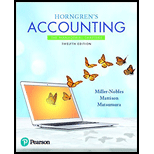
Concept explainers
Accounting for uncollectible accounts using the allowance (percent-of-sales) and direct write-off methods and reporting receivables on the
| Learning Objectives 1, 2, 3 1 |
On August 31, 2018, Bouquet Floral Supply had a $140,000 debit balance in
• Sales on account, $550,000. Ignore Cost of Goods Sold.
• Collections on account. $584,000.
• Write-offs of uncollectible receivables, $4.000.
Requirements
1. Journalize all September entries using the allowance method. Bad debts expense was estimated at 2% of credit sales. Show all September activity in Accounts Receivable, Allowance for Bad Debts, and Bad Debts Expense (post to these T-accounts).
2. Using the same facts, assume that Bouquet used the direct write-off method to account for uncollectible receivables. Journalize all September entries using the direct write-off method. Post to Accounts Receivable and Bad Debts Expense, and show their balances at September 30. 2018.
3. What amount of Bad Debts Expense would Bouquet report on its September income statement under each of the two methods? Which amount better matches expense with revenue? Give your reason.
4. What amount of net accounts receivable would Bouquet report on its September 30, 2018, balance sheet under each of the two methods? Which amount is more realistic? Give your reason.
Want to see the full answer?
Check out a sample textbook solution
Chapter 9 Solutions
Horngren's Accounting (12th Edition)
- Century 21 Accounting Multicolumn JournalAccountingISBN:9781337679503Author:GilbertsonPublisher:Cengage

